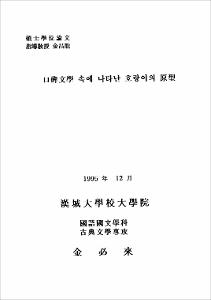구비문학 속에 나타난 호랑이의 원형
- Files in This Item:
-
-
Download
 000000066319.pdf
기타 데이터 / 3.4 MB / Adobe PDF
000000066319.pdf
기타 데이터 / 3.4 MB / Adobe PDF
-
Items in Repository are protected by copyright, with all rights reserved, unless otherwise indicated.
 000000066319.pdf
기타 데이터 / 3.4 MB / Adobe PDF
000000066319.pdf
기타 데이터 / 3.4 MB / Adobe PDFItems in Repository are protected by copyright, with all rights reserved, unless otherwise indicated.